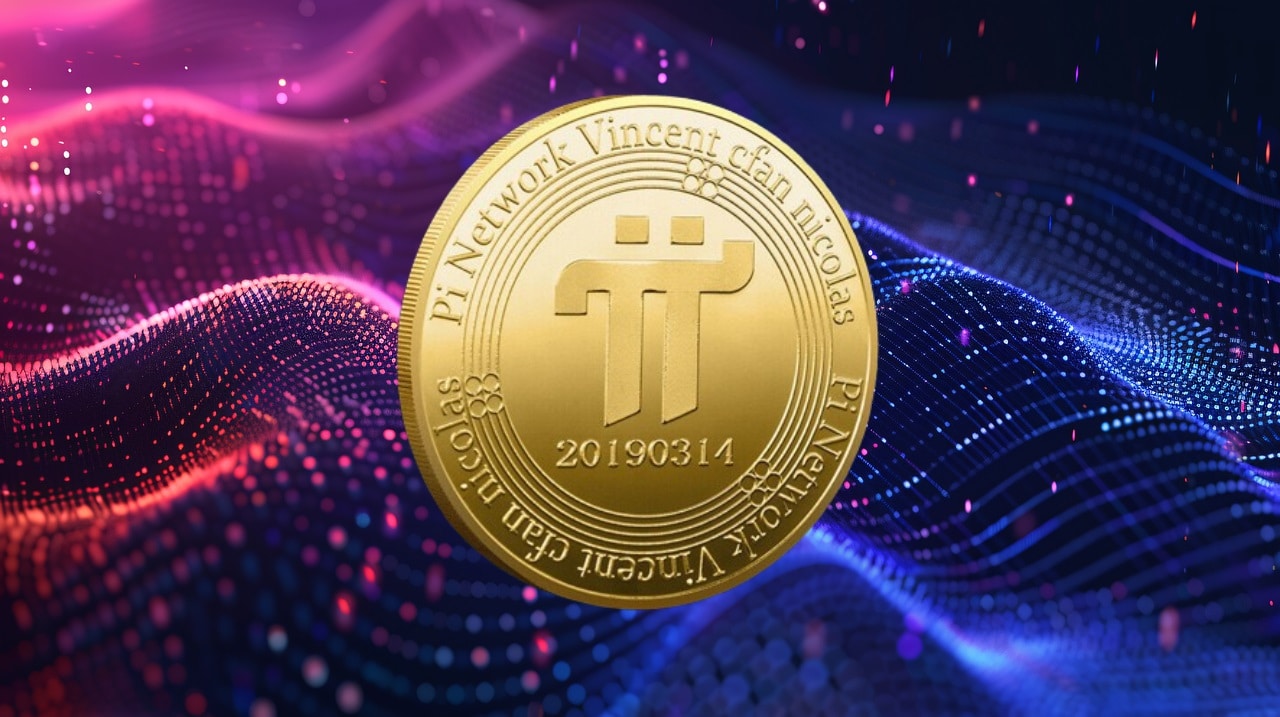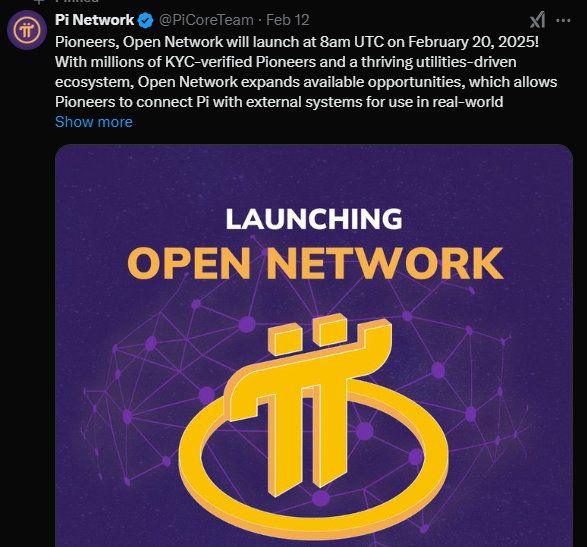After years of building anticipation, Pi Network, one of the most talked-about blockchain projects, is finally stepping into the spotlight.
The much-anticipated Mainnet Launch is here, and the crypto community is buzzing with excitement, confusion, and curiosity about what this milestone means for the project and its ever-growing user base.

With millions of users who’ve been mining Pi coins on their phones, the big question now is: What can we truly expect from Pi Network’s Mainnet launch?
In this article, we’ll break down everything you need to know about the Pi Network Mainnet Launch.
From the technical aspects to the user experience, and, most importantly, what this means for crypto enthusiasts and Pi miners alike, we’ll answer all the questions swirling around this high-stakes event.
So, buckle up and let’s dive into the future of Pi Network—because the launch is just the beginning!
What is Pi Network and Why Does the Mainnet Matter?
Before we go into the details of the Mainnet launch, let’s quickly revisit what Pi Network is and why the Mainnet matters so much.
Pi Network is a digital currency project that allows users to mine cryptocurrency on their smartphones without draining their battery life or using excessive data.

It’s an innovative approach to mining, built on the premise that decentralisation should be accessible to everyone.
The Pi Network’s goal is to build a global digital currency that anyone can participate in, without needing expensive hardware or specialised knowledge.
For the past few years, Pi Network has been in its “testnet” phase, where users could mine Pi coins (referred to as Pi), and interact with the app, but the coins couldn’t be traded or used outside the platform.
The Mainnet launch marks the transition to a fully operational blockchain, where Pi coins will finally be able to be transferred, traded, and utilised in real-world applications.
So, why does this launch matter? Because this is the moment when Pi goes from being a “theoretical” cryptocurrency to a fully functional, market-ready digital asset.
If all goes well, it could have massive implications for the future of mobile-based mining and decentralised finance (DeFi).
What’s New With the Mainnet Launch?
Here’s where things get interesting.
The Mainnet launch isn’t just about the Pi coins becoming tradable. It represents the culmination of years of development and testing.
So, what can we expect from the official launch?
1. The Migration from Testnet to Mainnet
The most immediate change users will see is the migration of their Pi coins from the Testnet to the Mainnet.
This is a critical step, as it will allow Pi coins to be transferred between users, exchanged for other cryptocurrencies, or even used in real-world transactions.
The Pi Network team has been working hard on ensuring this migration process is smooth, but it’s important to note that not all coins will be eligible for the Mainnet launch right away.
Users will need to complete certain KYC (Know Your Customer) verification steps to have their coins validated and migrated.
While this may seem like an extra hurdle, it’s necessary for the legitimacy of the project and its integration into the wider crypto ecosystem.
2. The Official Wallet Launch
The launch of the Mainnet will also see the debut of the Pi Wallet.
This wallet will be the primary way users can manage, transfer, and use their Pi coins. With the Pi Wallet, users can store their coins securely and begin using them for transactions—whether that’s in-app purchases, peer-to-peer payments, or potentially for goods and services in the Pi Network ecosystem.
The wallet will also open doors to more advanced features, like staking and token swaps, as the Pi Network continues to expand. Think of it as your gateway into the growing Pi ecosystem.
3. Pi Network’s Decentralisation and Governance
Pi Network has always been about decentralisation.
With the Mainnet launch, the project will officially be a fully decentralized blockchain, meaning that the network will no longer be controlled by a single entity.
Instead, it will rely on a distributed network of validators, making it more secure and resistant to censorship.
Additionally, the launch will bring a more robust governance system to the network.
Pi coin holders may have the opportunity to vote on key decisions related to the future of the network, giving users a direct say in the direction of the project. This will be crucial as the project matures and scales.
What Does This Mean for Pi Miners?
For those who have been mining Pi on their phones for months or even years, the Mainnet launch is a big deal. But what does it mean for all the Pi miners out there?
1. Mining Will Continue—With New Requirements
While the ability to mine Pi coins on your phone will continue after the Mainnet launch, there will be some changes in how mining works.
The mobile mining system is designed to be less energy-intensive, making it more accessible for everyday users.
However, as Pi Network transitions into the Mainnet phase, the mining rewards may adjust in line with the network’s increased security and efficiency.
Some speculate that mining might become more competitive, and users may need to step up their participation in order to earn rewards.
There may also be new requirements or limitations on how much Pi users can mine per day, as the network becomes more decentralised and integrated with other blockchain projects.
2. Pi Network’s Future Utility
Perhaps the most important thing to remember is that mining Pi isn’t just about holding onto coins for potential future gains.
The Pi Network team has emphasised that their goal is to create a functional and useful currency that people will actually use.
The Mainnet launch will likely open up more opportunities for Pi coins to be used in the real world, whether for payments, investments, or accessing services within the Pi Network ecosystem.
As the Pi Network expands its partnerships and builds out its ecosystem, the value of Pi could grow—if it proves to be useful in the real world.
This is where early miners will either reap the rewards or find that the excitement was all hype.
For now, Pi miners should pay close attention to the projects and applications that start integrating Pi coins, as this could shape the future of their holdings.
Pi Network’s Future: What Lies Ahead?
As exciting as the Mainnet launch is, it’s just the beginning.
The real test for Pi Network will be how it integrates into the broader crypto landscape.
For example, how will it be received by exchanges? Will it gain real-world adoption and become more than just a speculative asset? Can it compete with other cryptocurrencies that have a stronger market presence?
The Pi Network’s future success will largely depend on the team’s ability to attract developers, create real-world use cases, and build trust in the Pi ecosystem.
With the launch of the Mainnet, Pi coins will finally be able to enter the competitive arena of digital currencies.
Whether it rises to prominence or fades into obscurity is up to the community and the project’s execution in the coming months.
Should Crypto Enthusiasts Jump In?
The Pi Network Mainnet launch is a milestone that many have been waiting for, but with it comes a slew of questions and uncertainties.
For crypto enthusiasts, the launch represents an exciting opportunity to engage with a blockchain project that has the potential to democratise cryptocurrency mining and expand the scope of decentralised finance.
However, as with any new cryptocurrency project, the risks are real.
The Mainnet launch will bring clarity about whether Pi Network’s promises can be delivered. It’s important to proceed with caution, do your research, and remember that the world of crypto is still a volatile and unpredictable space.
Will Pi Network rise to the occasion and become the game-changer it’s been hyped to be? Or will it be just another footnote in the world of crypto?
Only time will tell—but one thing is for sure: the Mainnet launch is a significant moment for the future of Pi Network and the crypto space as a whole.

